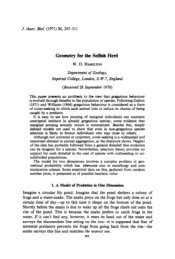Chapter 6 - Ethical Culture Fieldston School
Chapter 6 - Ethical Culture Fieldston School
Chapter 6 - Ethical Culture Fieldston School
Create successful ePaper yourself
Turn your PDF publications into a flip-book with our unique Google optimized e-Paper software.
“Mr. Sinatra Gets Rejected”<br />
established public perception that Sinatra was not quite the celebrity he had been<br />
during the war. Indeed, Sinatra took the gig in part because he needed the<br />
money, and the mental and physical stresses of multiple shows a night over a<br />
period of weeks was no doubt a major factor in the vocal health of a not‐quite<br />
young 34 year‐old who simply lacked the effortless ability he exuded a decade<br />
earlier.<br />
Sinatra’s fall from grace can plausibly be attributed to shifts in public taste<br />
and a real decline in the quality of his singing (though the latter, as I plan to<br />
make clear later, is a partial explanation at best). Strictly speaking, these were<br />
both matters beyond his control. But the most important cause of his fall may<br />
well have been was his own personal conduct. In part, this was a matter of<br />
comeuppance by those who had been neglected – and, all too often, abused –<br />
during his rise, and who were now only too happy to see him fall. “It was<br />
pathetic,” a Columbia Records engineer said of Sinatra’s recording sessions at<br />
mid‐century. “Sinatra would open his mouth and nothing would come out but a<br />
croak. Usually, when a singer is in bad shape, we can help him by extending his<br />
notes with an echo chamber. But Sinatra was one of the meanest men we ever<br />
worked for, so we engineers and musicians just sat on our hands and let him go<br />
down.” 29<br />
However widespread or fair such comments may have been, they were<br />
essentially a private matter concerning Sinatra’s workaday world. Far more<br />
problematic was public behavior that could be witnessed – and reported.<br />
Rumors over Sinatra’s involvement in organized crime can be dated to 1947,<br />
when he visited the notorious gangster Lucky Luciano in Havana. Long<br />
fascinated by gangsters, Sinatra ate, gambled, and even posed for pictures with<br />
28 Wilson, p. 77.<br />
American History for Cynical Beginners<br />
25
















